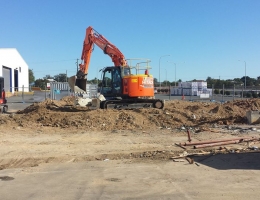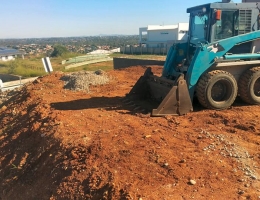Dissecting the Definition of a Standard Grade Excavator
by James Spencer BloggerBuildings, factories, offices and whatever constructional exists in this globe, they would always admit their dependence to these high-performing excavators.
Being used for a variety of purposes, an excavator is the mechanical hand and eye of a professional excavating contractor. As mentioned earlier, the excavators also come in good use for the professional contractors for earthmoving in Brisbane since they are categorised to carry out earthmoving projects with ease and efficiency. For those of you, who want to be a bit more aware about this fantastic piece of machinery, this article would be of helpful use.
Read on and dive deeper into the information about an excavator.


The Primary Definition
Excavators, as their name suggests, are machines that EXCAVATE. But what? Earth or soil of course! Usually, an excavator is known as a heavy-duty and high-powered machine that excavates earth for constructional, industrial or other purposes.
The Parts of an Excavator
Generally, the excavator is differentiated into two major parts in terms of its chief functions. These parts are also characterised as the defining sections of the machine. The first one is known as the tracks responsible for moving the vehicle-like part of the machine. The second one is called as the bucket that deals with excavating.
In Depth: Tracking the Tracks
The tracks act like wheels and are responsible for the movement of the part in the machine that resembles and works like a vehicle. The part is heavier and it structurally absorbs more space than the bucket. The tracks also support the weight of this entire component. There are two tracks in an excavator. Both these tracks remain parallel to each other. They are connected with the help of an undercarriage.
What Is Known As The 'Housing'?
The housing is a part which is supported by the undercarriage. Basically, the housing rests upon the mass of the undercarriage. The housing is the part that rotates, incorporating the assistance of an axis of a plate. Hence, the machine is able to move on uneven surfaces of land.
The Position of the Cab of an Excavator
The cab part is located above the tracks and is fixed upon it. It is closer to three parts of the machine. These are the bucket, the boom and the stick.
And Where Are They All Located?
Well, all these aforementioned parts and the hydraulic pumps, motors and the engine find their place upon the housing plate.
How Does It Work?
The housing plate can rotate completely by 360 degrees. This operation helps the other components of the machine to rotate with it. This is the process contractors for earthmoving in Brisbane term as the flexible and dominatingly working part of the machine. However, the undercarriage and the tracks do not rotate since they support and move the machine.
To Conclude: Let's Give A Surprise!
Well, the surprise is that excavators come in varied shapes and sizes. It will be wrong to classify one of these machines according to a particular size. Each size has a specific agenda for which it is fitted.
The truth is that an excavator never stops surprising you!
Sponsor Ads
Created on Jul 19th 2018 09:03. Viewed 209 times.
Comments
No comment, be the first to comment.



